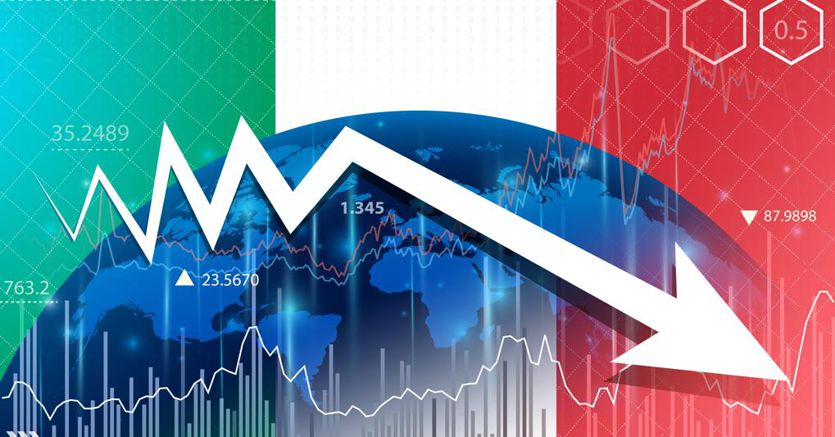Growth slowing to zero in 2023. According to the Confindustria Study Center, the Italian GDP, which recorded a positive dynamic in the first half of 2022, will undergo a downward adjustment between the end of this year and the beginning of the next. and then recover slowly. In the report “Italian economy still resilient between uncertainty and shock?” growth in 2022 (+ 3.4%) is already fully achieved and is much higher than what was expected six months ago. For 2023, on the other hand, there is a strong downward revision compared to the April scenario (-1.6 points), which leads to stagnation on average for the year. The dynamics of consumer prices in Italy weighed above all, which in a short time in 2022 reached + 8.9% per annum in September, on values not recorded since 1985. The surge in consumer energy prices (+44, 5% per annum) is responsible for about half of this increase. On average in 2022, inflation will stand at + 7.5%, and then partially reduce next year (due to the mechanical effect of a gas price assumed to be at a standstill in the forecast horizon), but on values that are still double compared to the objective indicated by the Central Bank.
The expensive bills
The main critical factor is the increase in the price of natural gas in Europe, which in August reached peaks never reached before (236 euros / mwh on average, daily peak at 330) and whose price seems destined to remain high for a long time. The increase in the price of gas is having several effects, all of which are negative. In the first place, it pushed inflation up: + 8.9% per annum in Italy in September. The surge in consumer energy prices is responsible for a large part of this inflation (+ 44.5% per year, + 4.2% the contribution). As explained by the Study Center of companies with nominal wages blocked and those in real terms that are decreasing, there is a growing contraction in demand. The extra savings accumulated by households (about 126 billion euros more in resources set aside between 2020 and mid-2022) played an important stabilizing role, but it will not last for much longer, the industrialists underline. Not everything will be spent but it is certain that inflation is eroding an increasingly substantial part of it. On the other hand, only households with higher incomes (which represent the share of higher consumption) are benefiting from the extra-saving, the others first moved to cheaper consumer goods and then began to reduce purchases.
The gas price cap pushes GDP
For the Study Centers, the incidence of energy costs on the total rises from 4.6% to 9.8%, “unsustainable levels, which correspond, despite a heterogeneous increase in sales prices for sectors, to a profound reduction in company margins “. And the scenario could get worse if the Russian gas stop actually materializes. In this case, Confindustria estimates, there would be a shortage of gas supply in Italy at least equal to about 7% of demand, “with significant impacts on activities and added value, especially in the industrial sector”. Consequences, these, which could be limited with really effective measures on the containment of consumption. consumption. If the price of gas spiked in a lasting way to the values of the peak reached in August (330 euro / mwh, for example in the case of the blocking of imports from Russia) the additional impact on GDP would be -1.5% in 2022- 23. On the other hand, in the event of a ceiling on the price of gas of 100 euros, GDP would gain 1.6% in the two-year period.
They are holding back investments
Business investments are also losing momentum, at least according to the scenarios hypothesized by the Vaile dell’Atronomia Study Center. Construction has provided the largest contribution so far, also thanks to the significant boost from building bonuses. But energy prices, and therefore narrow margins, uncertainty and tensions on world trade have actually accentuated the slowdown. Interest rate hikes are also negative for investments, which will have an impact on the cost of credit. The increase in rates paid by businesses has already begun: 2.01% in July for SMEs (from 1.74% in January), 1.01% for large companies (from 0.76%). If the cost of money continues to rise markedly, the financial situation of companies, already weakened in 2020, would also worsen. The European resources of the NRP, however, exert a “significant boost to investments in Italy”. But what is worrying is the timing of implementation of the National Recovery and Resilience Plan on which the same “braking” elements affect investments in 2022 and 2023, ie the extra costs and the difficulty of finding raw materials.
With the stop to the declining international export demand
In the first part of 2022, the export performance was very positive and higher than expected, despite bottlenecks, price increases along international supply chains, sanctions crossed with Russia, and the uncertainty in the scenario. But the sharp slowdown in international demand in the last part of 2022 and next year, especially in the main export markets for Italian goods (Europe and the United States), will strongly reduce the growth potential of our exports. In the scenario developed by the Study Center, exports of goods and services, therefore, after a double-digit expansion in 2022 (+ 10.3%), will slow down sharply in 2023 (+ 1.8%).
